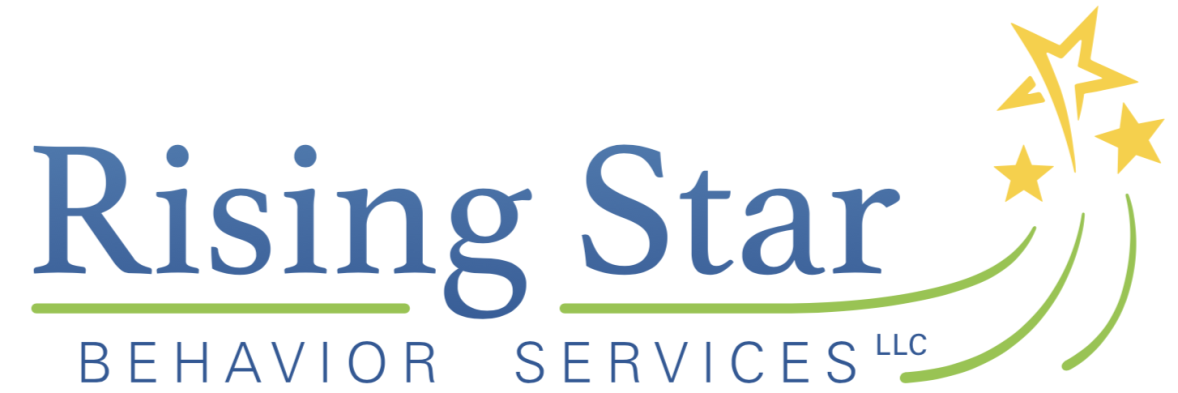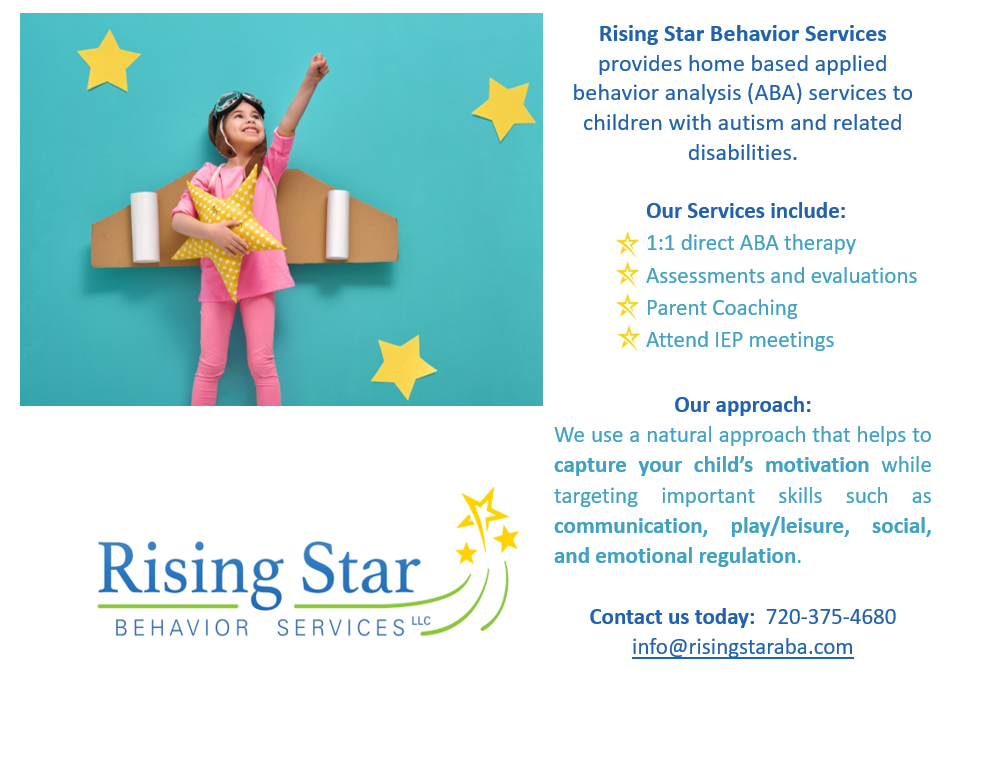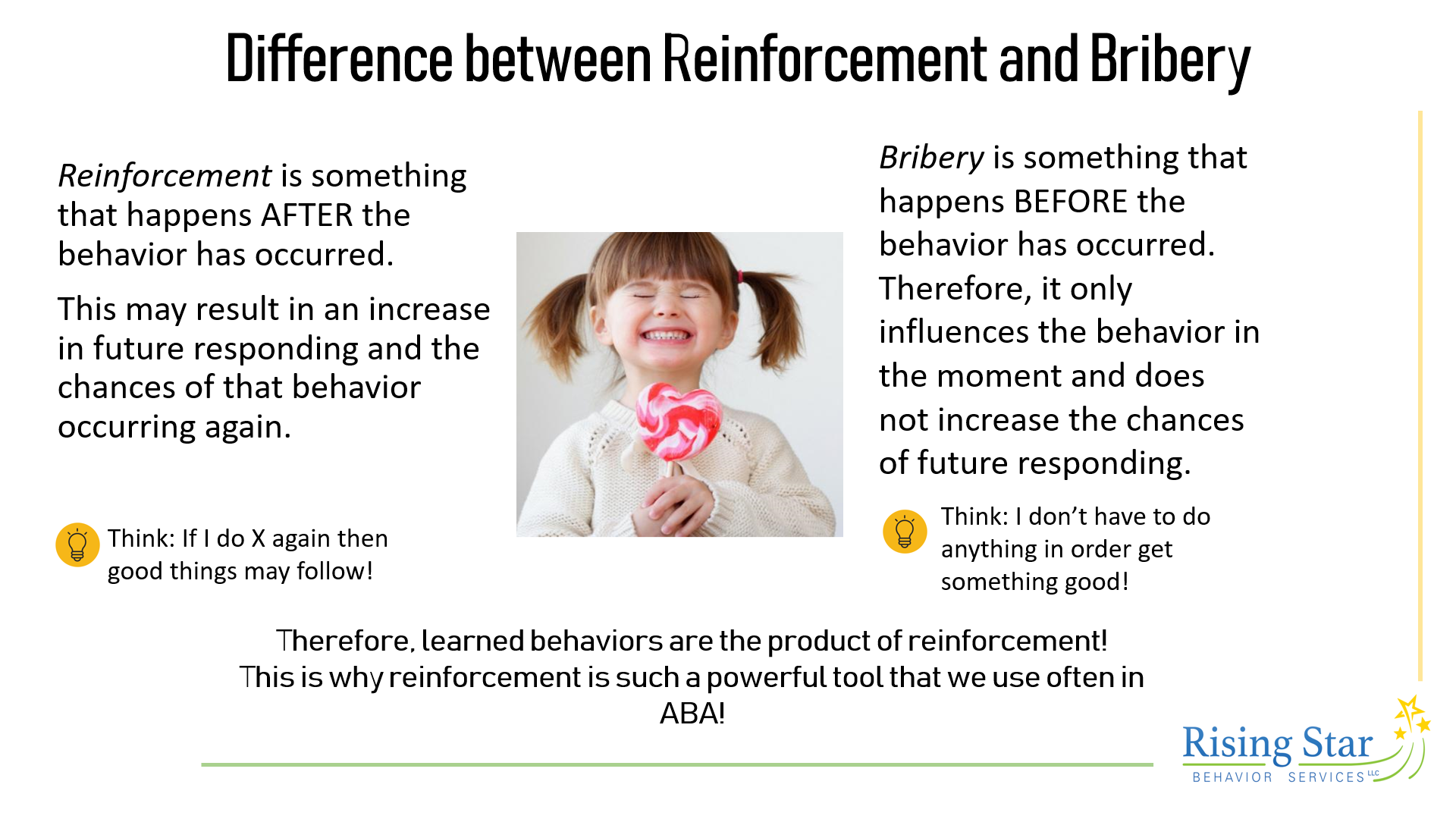ABA Therapy Insights and Tips
For this reason, Premack Principle is often referred to as “Grandma’s Rule”. This is because Grandmas are really good at reminding their grand kids, for instance, that they can’t have their deserts if they don’t finish their vegetables! In other words, grandma is able to increase the chances of their grand kids finishing their vegetables if she makes cake available afterwards. What do you think would happen if she offered cake first? That’s right, you wouldn’t expect their grand kid to eat all of their peas!
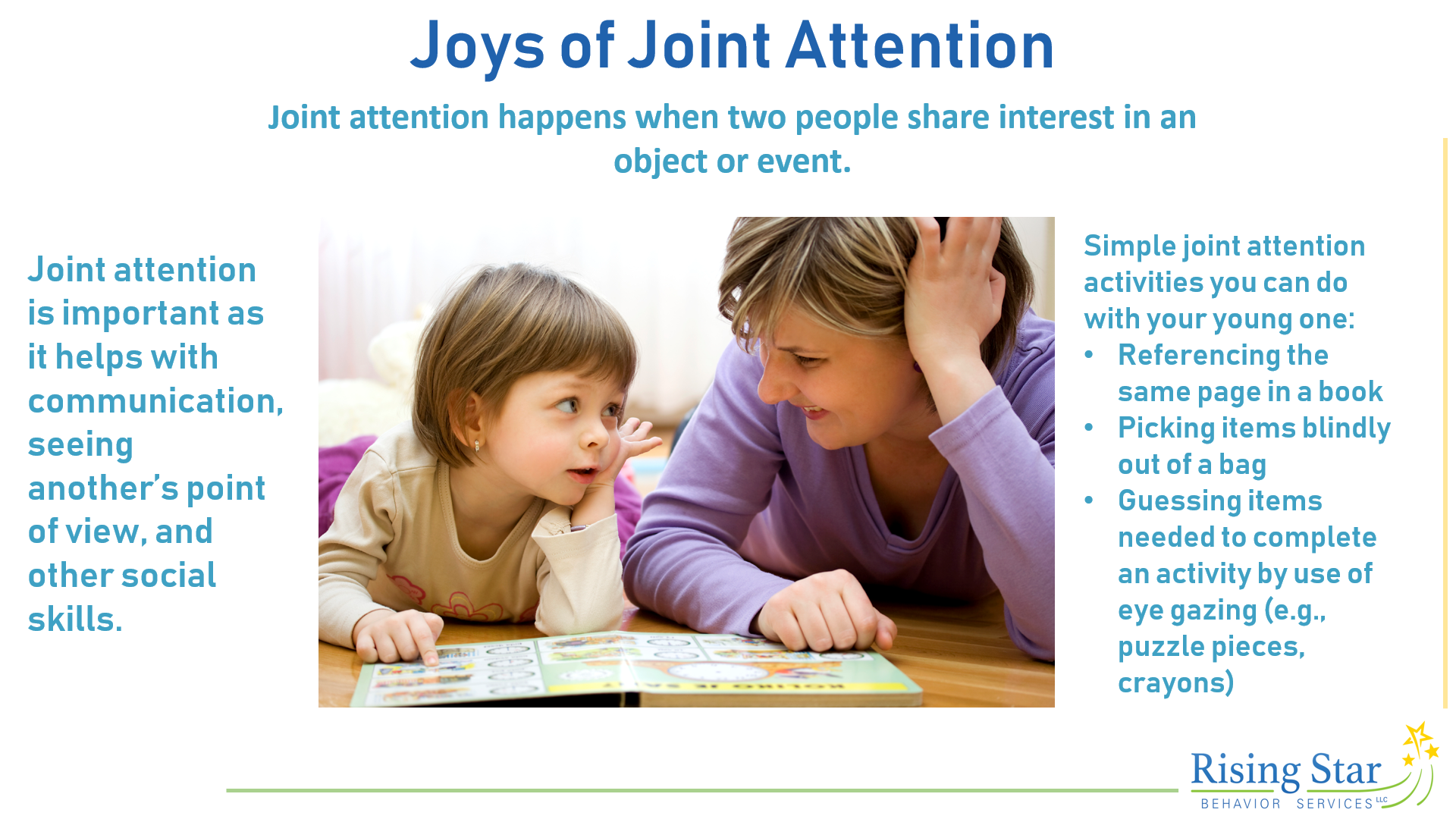
Joint Attention happens when two people share interest in an object or event. This may typically be done through eye gazes, or verbal and non-verbal communication. Some examples of verbal communication may come in the form of gasps or even using statements such as “Look at this!”. The most common form of joint attention done through non-verbal communication is pointing. Typically when a child sees something of interest they may point at, or towards, the object which brings attention to it so that others may share in their excitement!
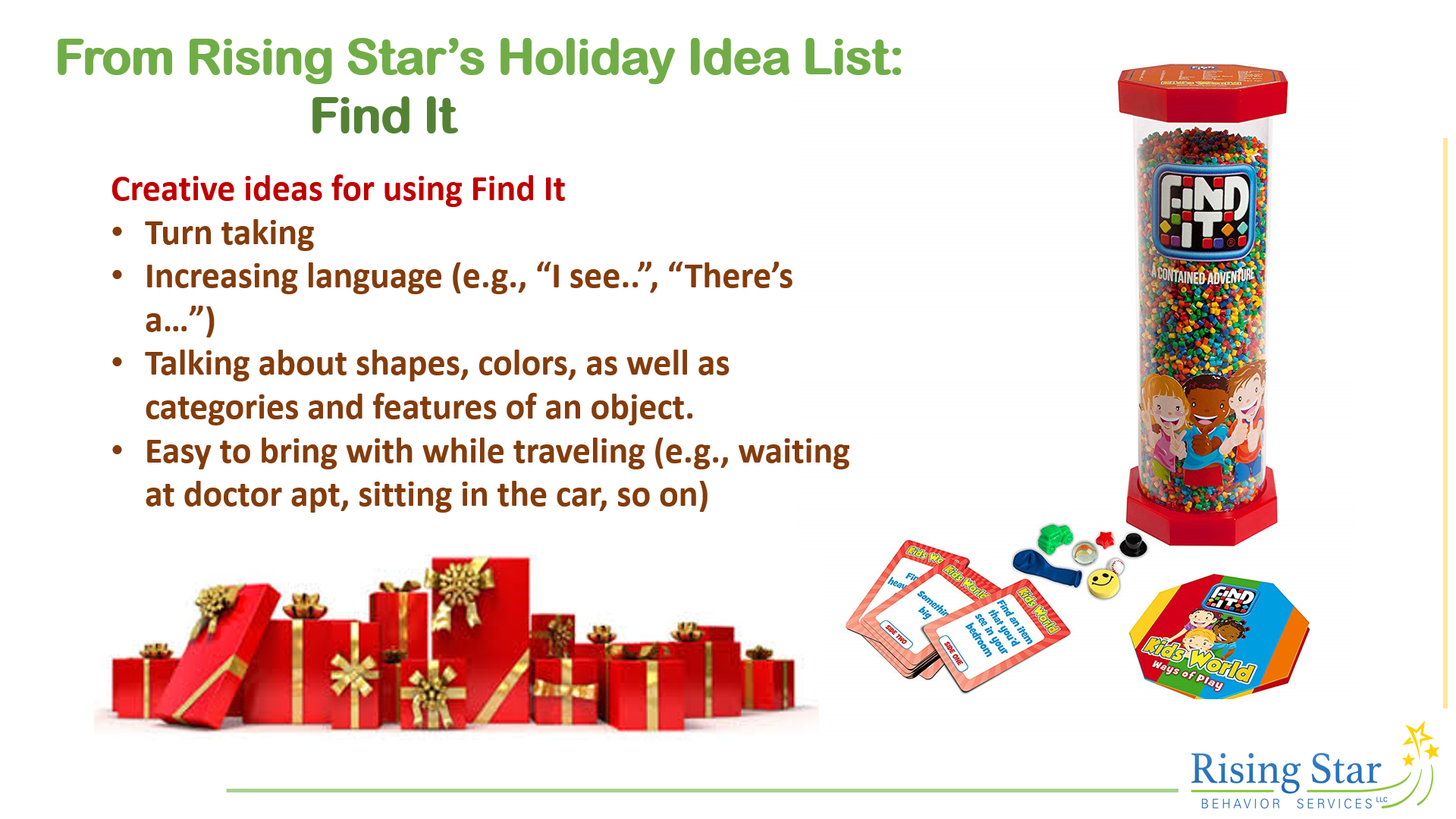
I am very excited to speak about our gift idea, Find It. It’s one of my favorites to use in ABA sessions and it can be a fun toy for any child! Find It is basically a portable treasure hunt for your kid. Hidden within the pellets are about 40 different objects, and the goal is to try and find each object by shaking the Find It capsule. Watch as objects appear and disappear with each shake! This can keep a child entertained for awhile as they try and find all 40 objects!
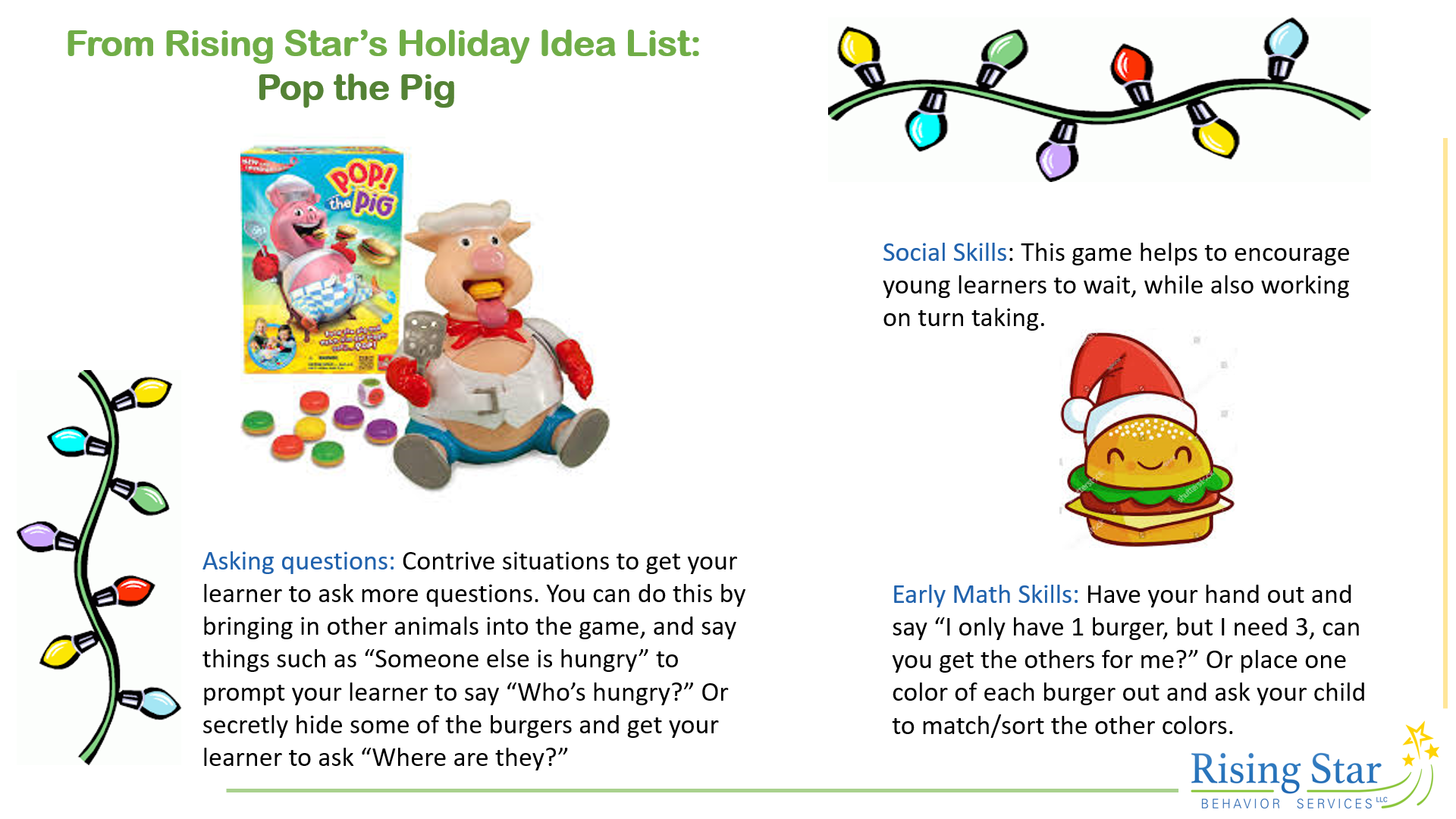
Pop the pig is game that is great for our young learners! The concept of the game is simple, and therefore easy to learn. You roll the die to select which colored burger you’re going to feed the pig. After you choose one burger in that color, you look at the bottom to find a number. That number tells you how many times you push down on the pig’s head.
We are excited to announce that we will begin offering applied behavior analysis (ABA) services in the Denver / Boulder Metro Area in November 2018. We look forward to helping you with your needs!
